Tashichho Dzong
Weather :
Label : Popular among Locals
Tags : Buddhist Temple
Timings : Monday - Friday: 5:30 PM - 6:00 PM,
Saturday, Sunday: 8:00 AM - 6:00 PM
Time Required : 1 - 2 hours
Entry Fee : Tourists: BTN 300,
Students: BTN 150,
Tariff payers, Children (below 5 years): No Entry Fee
Thimphu Dzong
Tashichho Dzong, Thimphu Overview
Tashichho Dzong is a fortress located about 2 km away from the city of Thimphu in Bhutan. It had been constructed in 1641 and underwent several restorations since then. It currently serves both as a monastery and the central secretariat of the present government. Also known as the "fortress of the glorious religion", it is found right on the banks of the Wangchhu River.
Originally built in 1216, the original structure of the Tashichho Dzong was destroyed in a fire, with the current dzong structure being newly built. A lovely rose garden in front of the building welcomes the visitors to the fortress. The manicured garden surrounding the building is a beautiful sight too. The tall building is a prominent landmark of Thimphu with almost all sightseeing tours of the city beginning with a visit to this beautiful Dzong resplendent with a golden roof.
The Throne Room along with several officers of the monarchy are situated within the Tashichho Dzong. Multiple government wings function from the fortress as well. The Je Khenpo or the "central monastic body", however, have made it their summer residence and leave for Punakha Dzong in the winter.

Tashichho Dzong Highlights
1. Tashichho Dzong at Night

2. Tashichho Dzong Festival

However, cymbals and drums are the only two instruments utilised during the festival. The celebration is held to honour Guru Rinpoche or Padma Sambhawa who introduced the Tantric rites of Buddhism to the Himalayan Kingdoms. The festivities end on the third day with the display of a colourful cloth made thangka (scroll) that contains images of Guru Rinpoche as well as Lord Buddha with his followers.
Read More on Tashichho Dzong
History of Tashichho Dzong
It was rebuilt totally and given its present name after that. There are two parts of the Dzong, the upper and the lower one. The dzong was built on the Dho-Ngon hill (bluestone) but now the fortress has been built into a large building.
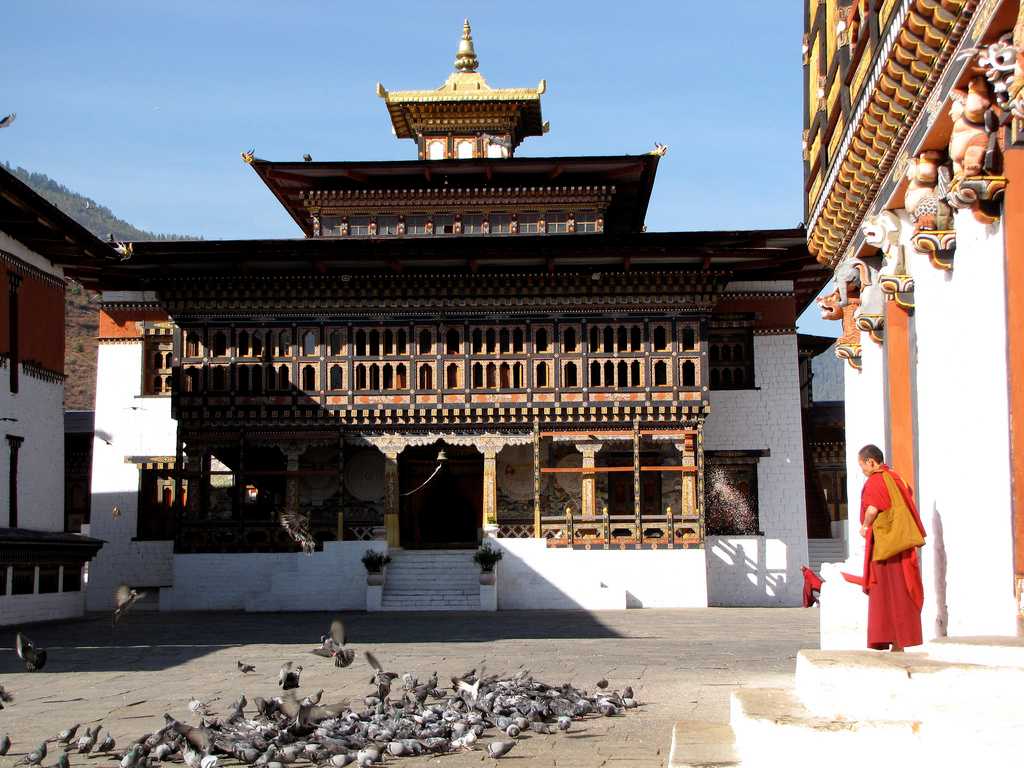
The fortress was enhanced in 1694 by the fourth secular ruler of Bhutan, Desi Tenzin Rabgye and become more spacious. However, it was ravaged by fire four years later and had to be restored once again. Chogyal Sherab Wangchuk, the 13th Desi (secular ruler) added to the construction in 1741, making it aesthetically appealing as well. Unfortunately, fire gutted the building yet again during the time of the 16th Desi who had the entire fortress relocated to the present site.
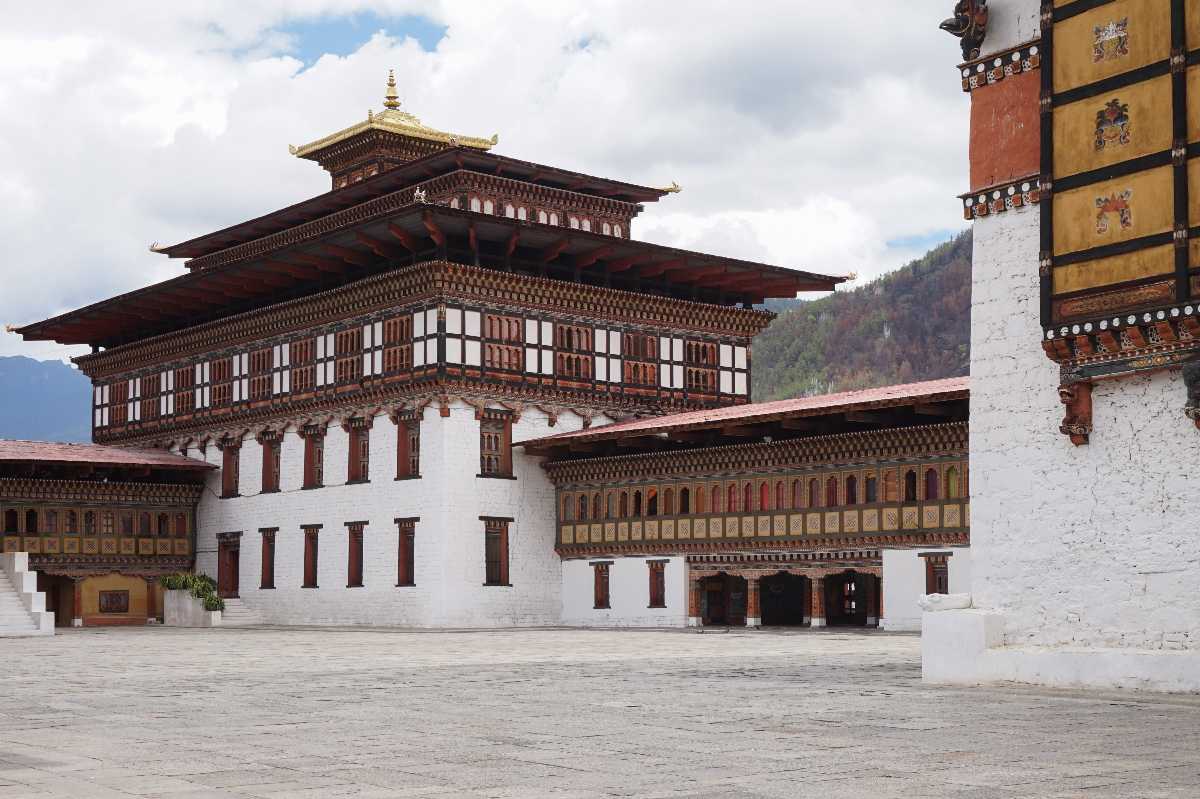
It was renovated to represent a modern building in 1969 by the reigning king Jigme Dorji Wangchuck. Amazingly, the entire construction was done traditionally without nails or by following a written and formal design. The Earth Bord Year of 1969 saw the fortress sanctified by Je Khenpo Thri Zur Thinley Lhendup as well as Dorji Lopon Nyizer Tulku. The National Assembly of Bhutan does not meet within the fortress at present with the quarters turned into the secretariat and rooms for the ruling monarch.
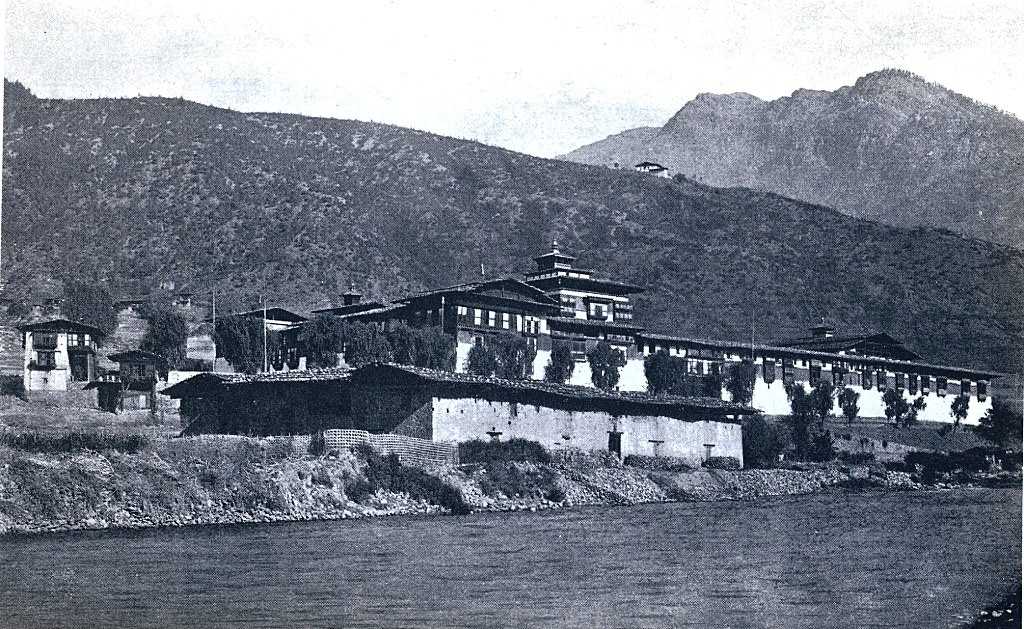
Built by Lama Gyalwa Lhanapa in 1216, it was overtaken by Shabdrung Ngawang Namgyal in 1641. But the initially constructed dzong was destroyed in a fire in 1772. At the original site, now stands Dechen Phodrang Monastery. The monastery was relocated in the current location. But since then, it has been destroyed three times in natural fires. It was severely damaged in an earthquake in 1897 and later consecrated in 1902.
The dzong was renovated in 1952 when the country’s capital moved from Punakha to Thimphu. The dzong, as we see it currently, is the one built after 1952 by King Jigme Dorji Wangchuck. The most striking feature, out of everything, is that the dzong is as glorious as any even after going through so many natural disasters. Its grandeur still stands as it is, making it a marvel.
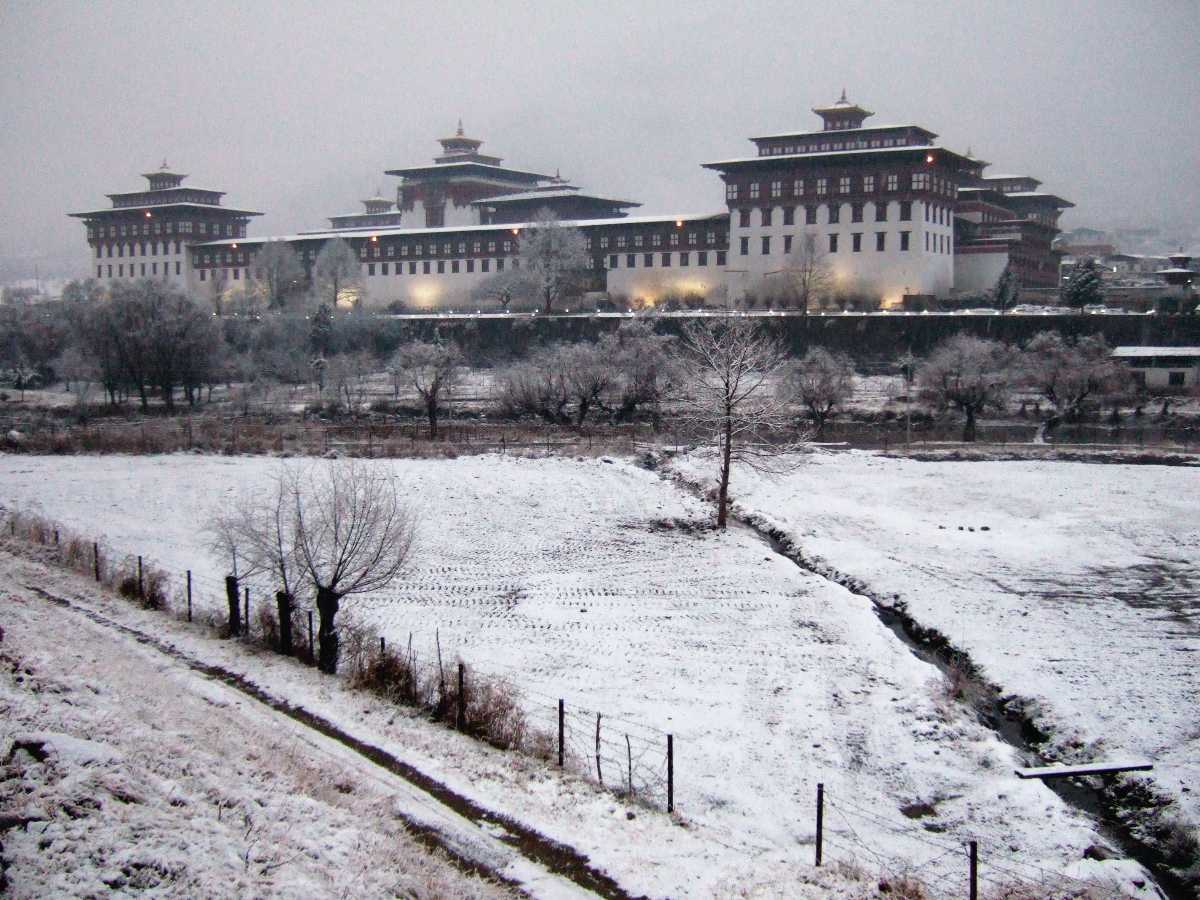
Tashichho Dzong Architecture
Tashichho Dzong has been constructed in a traditional Bhutanese style, without any use of nails. The whitewashed walls preserve the treasures that are stored inside, including statues and paintings. It is two stories high, with three-storeyed towers at all corners of the dzong. The wooden work on the building is impressive and awe-inspiring. The well-maintained gardens surrounding the dzong are peaceful and provide a fantastic view to the visitors.
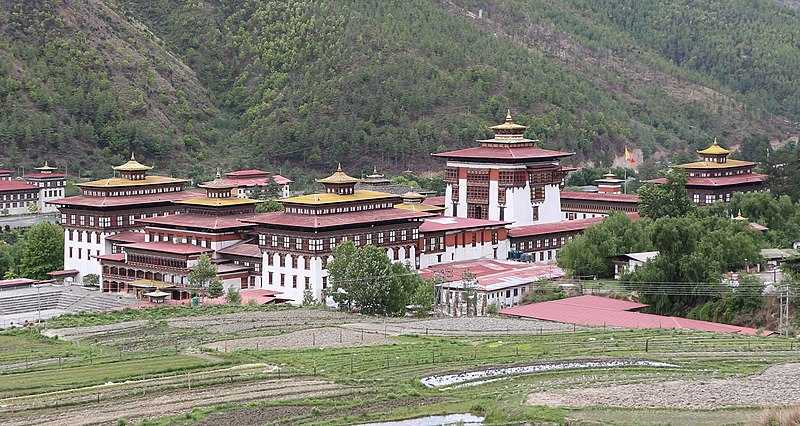
It is divided into three major sections - the king’s office, the administration block and spiritual section. There are beautiful paintings stored inside the dzong, which witness endless appreciation from art lovers. The carvings on the wall are intricate and related to Buddhism. The dzong, indeed, is more than just a structure of bricks. It is the identity of Thimphu and pride of Bhutanese.
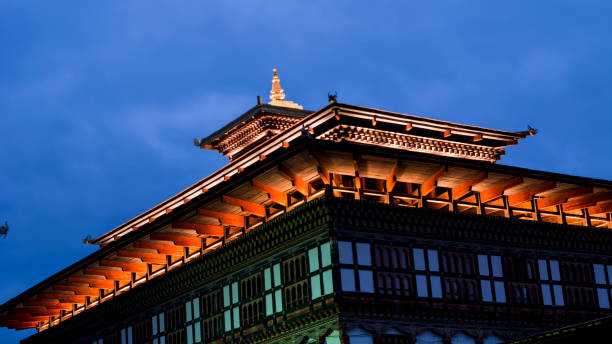
- The main building of Tashichho Dzong is protected by lofty stone walls that are deterrent for trespassers and curious onlookers.
- The walls surround an enormous courtyard and gardens with the administrative wing of the government being sheltered as well.
- The quarters of the monks remain segregated in the Northern side of the fortress.
- The entrance is a massive door made out of brick and iron assimilated together.
- The offices have no windows at the lower level and sport distinctive red and gold stripes on the upper half of the walls.
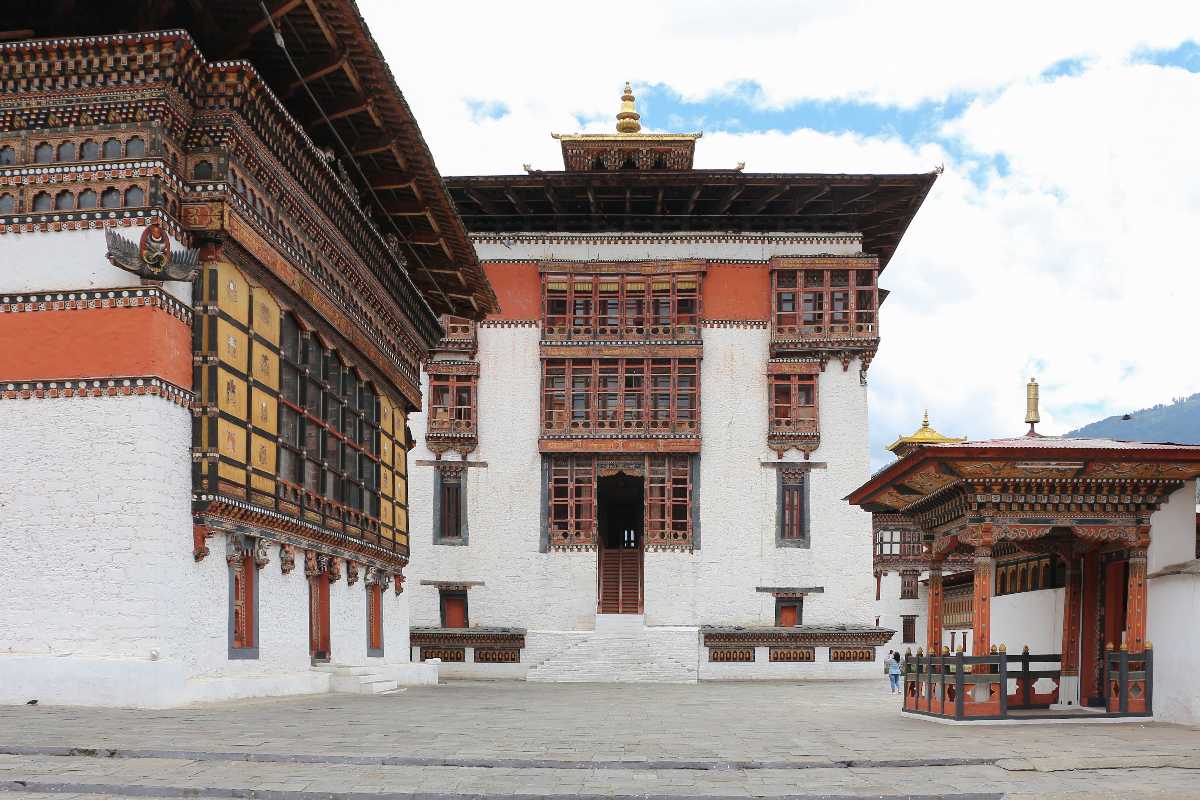
architecture prevalent in Bhutan, Nepal and Tibet (Source)
- There is extensive woodwork without the use of nails on the top half of the rooms. The golden roofs flare out and resembling the temple architecture popular in Buddhist countries.
- The entire premise including the courtyard, walls and other structures have Buddhist motifs all over them.
- The temple within (Lhakang) depicts Buddha's life via its beautiful motifs and paintings.
- The 'Neten Chudrug' or sixteen arhats was added to the building and blessed by Je Khenpo, the holy soul. It is unfurled and prayed to by the members of the royal family as well as the ministers of the state during the sacred ceremony commemorating the Maha-parinirvana of Lord Buddha.
Best Time to Visit Tashichho Dzong
Tips for Visiting Tashichho Dzong
- Photography is strictly restricted inside the Tashichho Dzong but visitors are advised to carry their cameras for capturing the beautiful sights outside as well as the lit-up images of the fortress at night.
- Tourists are forbidden to enter the premises in casual attire. T-shirts, shorts, skirts and sleeveless tops are considered taboo.
- It is best to carry a supply of food and water when travelling by a hired car, as roadblocks caused by landslides are frequent with the tourists having to stay in remote locations, away from habitation, for hours
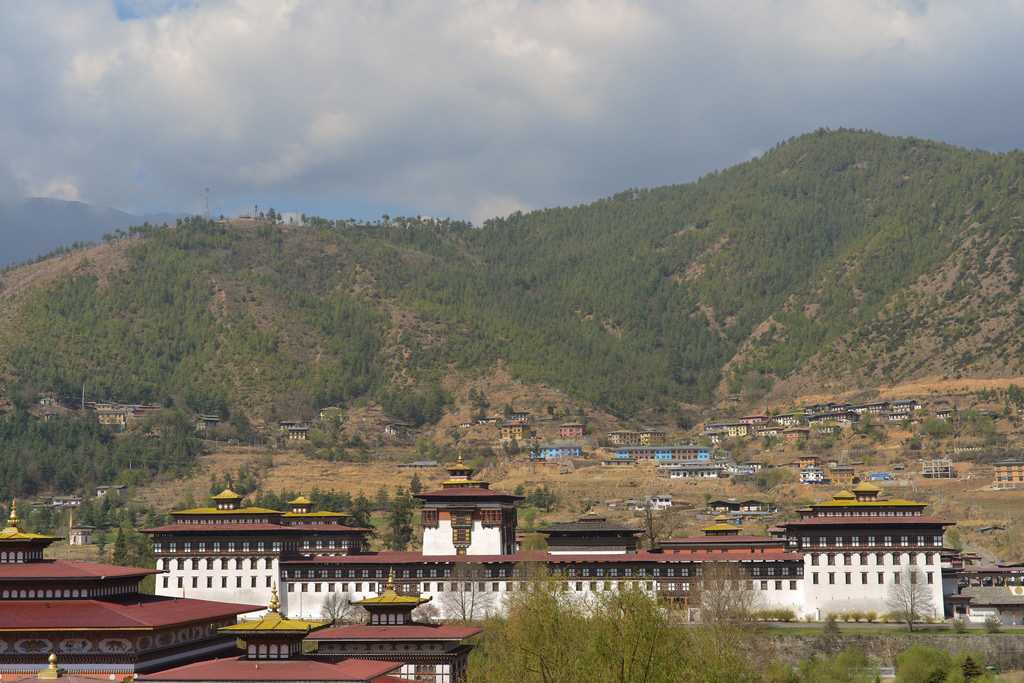
How To Reach Tashichho Dzong
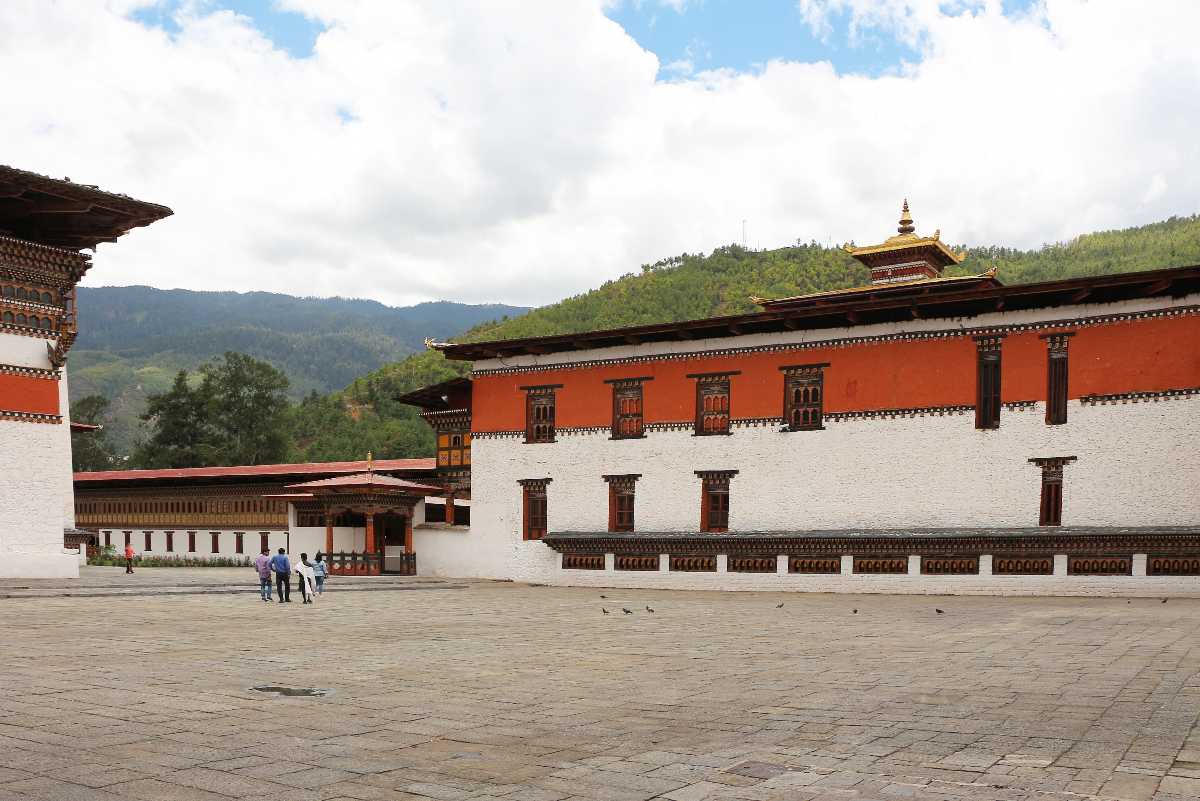
The Tashichho Dzong is located at Chhagchhen Lam and placed on the right side of the flowing river, Wangchhu. It can be accessed easily from any part of Thimphu. Visitors on a shoestring budget can travel on local buses plying from Thimphu to Tashichho Dzong. Unfortunately, it is time taking with the buses making frequent stops along the way. The visitors chose to hire cars or minibuses ordinarily for sightseeing when in Bhutan. A trip to Tashichho Dzong would cost BTN 500 by car and around BTN 3000 by a minibus that is most suitable for group tours.
Top Hotel Collections
Top Hotels Near Tashichho Dzong
Tashichho Dzong Reviews

Have a Question on Tashichho Dzong?

experience.